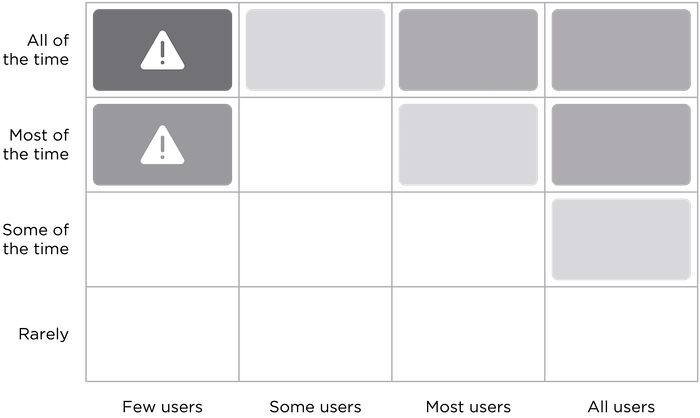“Feature engagement is more important than feature retention in my mind because if users come back, what are they coming back for? So it’s kind of that next layer and what are they doing when they come back? It’s just deeper into retention.” – Hiten Shah, Serial Entrepreneur
User experience thought leader, Jared Spool, breaks down time spent using a product into two categories:
- Goal time: time spent achieving core objectives, perceived as high value by users; and
- Tool time: time spent using the product itself, perceived as low value (e.g. logging in, managing the app, waiting, etc).
The thinking behind this breakdown—and Brian Balfour’s notion of meaningful usage—is that in the eyes of users, not every moment spent using a product adds value.
If users come back every week to unsubscribe from emails or to remove notifications, their usage can’t be compared to that of a user who performs core actions daily.
How to Analyze Engagement by Product Features
To dig deeper into retention, list all your product’s features excluding administrative features like account creation, password reset, etc.
What percentage of your user base uses each feature? How often do your users use the features? For each feature, is usage trending up, or trending down?
Set thresholds based on your product’s engagement. You can visualize feature usage using a chart like the following:

On the x-axis, plot out the proportion of users using each feature. On the y-axis, plot out the frequency of use.
Does this more granular breakdown match your understanding?
Now, slice-and-dice feature usage, looking at key dimensions:
- users vs. customers
- engaged vs. disengaged users
- roles within organizations for business products
- languages
- billing cycles for subscription products
- lifetime revenue
- payment plans
- profiles or personas, etc
Are there any outliers?
A feature engagement analysis will help you identify product features that are not being used (or confirm which features are being used as anticipated). It can also help you to gain a better understanding of the gap between what people say and what they actually do.
Senior product manager Nick Mauro recommends taking this even a step further. At SevenFifty, they assigned various weighting factors to the features and behaviors they perceived as most valuable. They were then able to measure the impacts of specific changes by looking at how scoring changed when product features got updated, or when the feature set changed.
Go beyond retention cohorts. Dive deeper and evaluate whether real feature usage matches your expectations.
– –
This post in an excerpt from Solving Product. If you enjoyed the content, you'll love the new book. You can download the first 3 chapters here →.